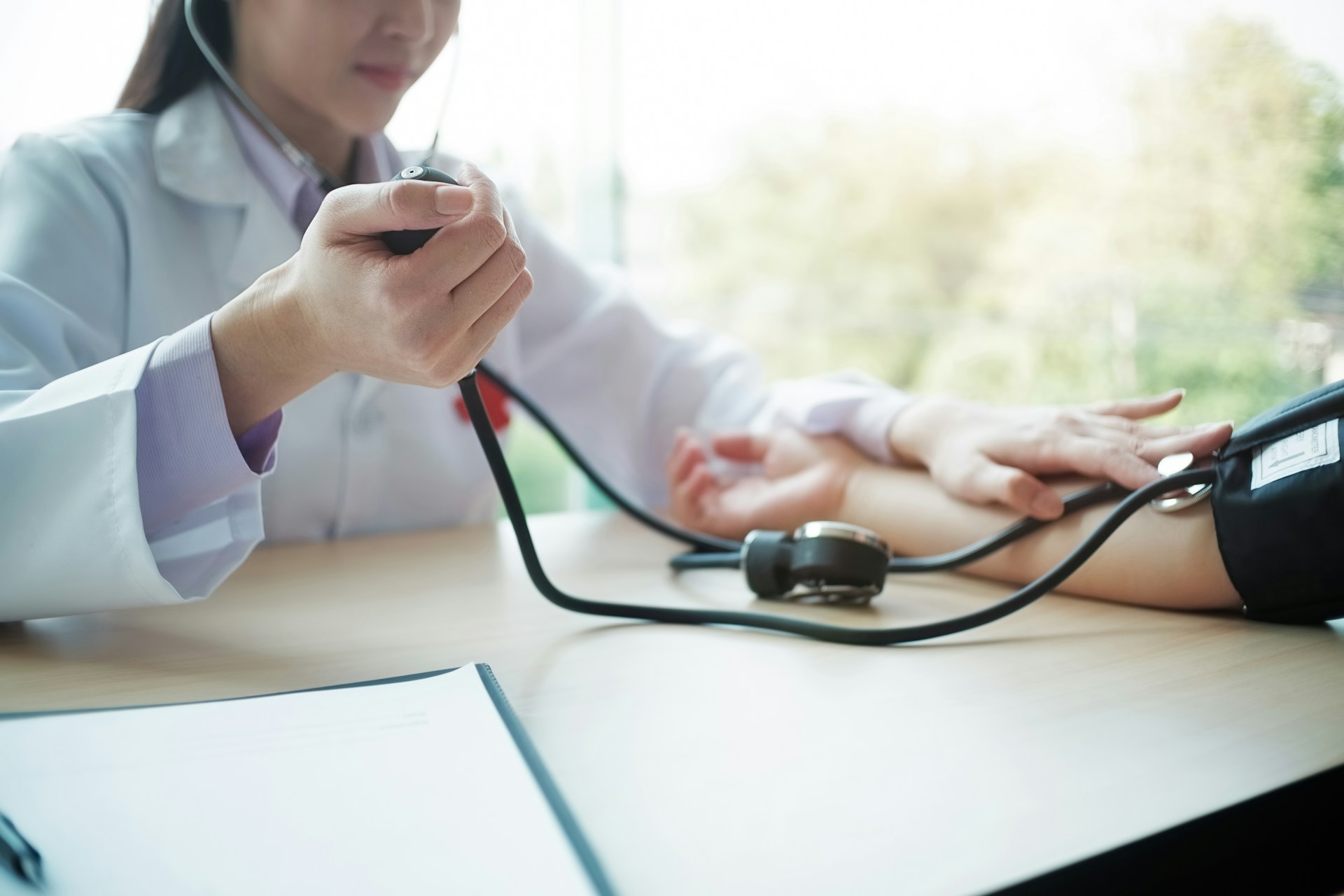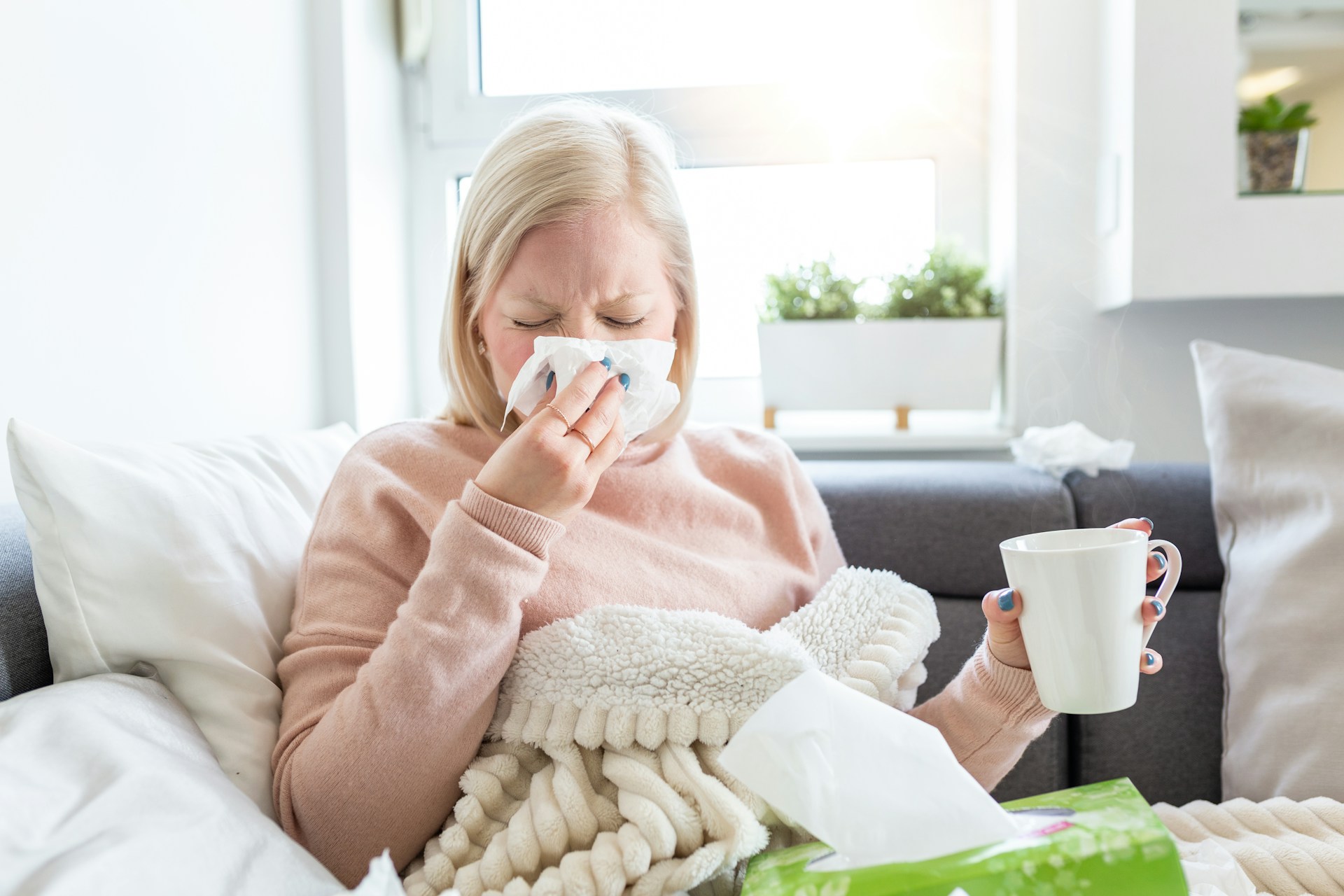Health
Get Accurate Blood Pressure Readings: New Research Reveals Common Testing Mistakes and Solutions

Before visiting a doctor, it’s routine for a nurse to review your medical history, note your height and weight, and check your vital signs. While these steps are standard and usually not a cause for alarm, the blood pressure reading can often raise concerns, especially if it registers high.
For those who experience anxiety in medical settings, known as white coat syndrome, it’s common to have your blood pressure checked multiple times during a visit to ensure accuracy. However, recent research indicates that anxiety might not be the sole factor causing elevated readings. A study published in a medical journal highlights that some standard blood pressure testing methods can lead to inaccurate results, potentially leading to unnecessary diagnoses such as hypertension.
Hypertension, or high blood pressure, is defined by the American Heart Association (AHA) as a reading of 130/80 or higher. This condition can lead to severe health issues, including stroke, vision loss, heart failure, heart attack, and kidney disease.
The AHA considers a blood pressure reading of 120/80 or less as “normal,” while 120-129/80 is regarded as “elevated.” Factors like smoking, alcohol consumption, and diets high in sodium and saturated fat contribute to high blood pressure. The AHA advises maintaining a healthy weight and regular exercise to keep blood pressure in check.
However, the method used to measure blood pressure is also crucial. The study found that having a supported arm, such as placing it on a table, can significantly affect the reading’s accuracy. Researchers analyzed three common arm positions used in blood pressure measurements: the arm supported on a desk, resting on the lap, and hanging by the side unsupported. According to clinical guidelines, the first option is recommended.
In the study, 133 adults aged 18 to 80 underwent 12 rounds of blood pressure measurements using these arm positions. The findings revealed that the most accurate readings were obtained when the arm was supported on a desk with the monitor cuff at heart level, averaging 126/74, which is considered healthy.
In contrast, the other two arm positions resulted in readings within the hypertension range. The lap-resting position averaged 130/78, while the unsupported arm position averaged 133/78.
“Health care providers need to be reminded about the importance of taking the time to do these steps properly,” stated Tammy Brady, PhD, the study’s senior author. “I just hope that it raises awareness regarding how important things like arm position are to blood pressure measurement accuracy.”
Brady, who is also the medical director of the pediatric hypertension program at Johns Hopkins Children’s Center, was taken aback by the study’s outcomes. “I did not expect there to be that much of a difference when the arms were placed in the two alternative positions,” she said. “We thought there’d be a difference, but I was surprised by how much of a difference there was.”
If you suspect your blood pressure reading is inaccurate, it’s important to speak up. Researchers emphasize following the latest clinical practice guidelines, which include using the correct cuff size, ensuring adequate back support, keeping legs uncrossed with feet flat on the ground, and maintaining a properly supported arm position.
Let us know what you think, please share your thoughts in the comments below.

Health
The Surprising Supplement Risk: What You Need to Know for Stronger Bones

Maintaining strong and healthy bones is crucial, especially as we age, and for many, this means turning to supplements like calcium and vitamin D. However, it’s important to remember that more isn’t always better. According to Dr. JoAnn E. Manson, a professor at Harvard Medical School, “People often assume that if some is good, more is better. This is generally not the case, and certainly is not true of vitamin D.”
While vitamin D and calcium are undeniably vital for bone health, excessive amounts of vitamin D may not offer additional benefits and could even be detrimental. A study published in JAMA highlighted this issue by examining the effects of different vitamin D dosages on bone health. Participants were given either 400 IU, 4000 IU, or 10,000 IU daily over three years. The results were telling: “Compared to just a modest dose of 400 IU a day, the study found no improvement in bone density at the higher doses and even a suggestion that there might be some harm by reducing bone density,” Dr. Manson explained. This outcome has been observed in other trials involving high-dose vitamin D.
So, how much vitamin D should one take? Dr. Manson advises against high doses, noting, “This is further evidence that high doses are not advisable. In terms of bone health, once you get to a certain level of intake, increasing that amount isn’t going to be beneficial.” She suggests a moderate intake of about 1,000 IU per day for those concerned about their vitamin D levels.
While supplements can help, obtaining vitamin D through diet and sunlight is preferable. Dr. Donald D. Hensrud from the Mayo Clinic mentions that “Vitamin D is found in some foods, such as egg yolks, cheese, cod liver oil, beef liver, and fatty fish like tuna, salmon, sardines, herring, and mackerel.” However, the quantities in these foods are generally small, prompting many to rely on fortified products like milk, cereals, and certain yogurts and orange juices.
Sun exposure is another critical factor in vitamin D production. Dr. Robert D. Ashley from UCLA Health explains, “The major source of our body’s vitamin D comes from our own production in the skin.” This process requires sunlight, and factors like limited sun exposure due to lifestyle or geographical location can increase the risk of low vitamin D3 production, potentially leading to bone density loss and fractures.
Geographical location significantly affects sun exposure. For instance, Dr. Ashley notes, “In the summer in Miami—with 25 percent of the body exposed to the sun—a person would need only 3 minutes of sun exposure to make a sufficient amount of vitamin D.” However, the same person in Boston during winter would require 23 minutes at noon to achieve the same vitamin D levels.
Balancing sun exposure is crucial to avoid skin cancer risks while ensuring adequate vitamin D levels. Dr. Ashley describes this as finding “a Goldilocks zone—between sufficient sun exposure to make vitamin D3 and the risk of getting skin cancer.” Fortunately, our bodies can store vitamin D for months, so missing a few days of sun isn’t a major concern if other days offer enough exposure. “You’ll still be safe from the detrimental bone effects of low vitamin D if you get enough sun other days,” he reassures. Therefore, it’s beneficial to spend some time outdoors regularly.
Let us know what you think, please share your thoughts in the comments below.
Health
Doctor Explains Why Your Allergies Are Lingering Longer Than Before

If you find yourself constantly battling with allergies that seem to last longer than ever before, you’re not alone. Dr. Sanjay Gupta, CNN’s Chief Medical Correspondent, recently shared some critical insights with Sara Sidner on CNN News Central about why seasonal allergies are becoming increasingly persistent. Whether it’s itchy eyes, relentless sneezing, or ongoing congestion, understanding these changes can help you manage your symptoms more effectively.
Dr. Gupta noted a significant increase in the number of people struggling with fall allergies. He explained, “As the weather changes and gets warmer outside, that first frost is delayed, leading to a cascade of events.” This observation is supported by Dr. Sanjiv Sur, Director of Allergy and Immunology at Baylor College of Medicine, who has confirmed, “There’s no question [that] as there’s global warming, the pollen season is increasing.”
The impact of climate change is evident in the lengthening of allergy seasons across various cities in the United States. Dr. Gupta explained, “Cities across America are going to have much longer allergy seasons. In Reno, for example, 99 days longer; in Atlanta, where I live, 33 days longer; up in New York, 21 days longer.” Dr. Christina Price, a Yale Medicine allergist and immunologist, adds, “Most people don’t have an immune response to pollen, but a certain percentage of people’s immune systems see it as foreign and dangerous, and they treat it like a pathogen.”
The economic burden of seasonal allergies is substantial. One study estimates that treating seasonal allergies in the U.S. costs around $3.4 billion annually. Dr. Price explains, “One aspect of allergies is that you can be really tired or fatigued, so it wipes you out,” highlighting how productivity can be significantly affected.
Beyond the discomfort, pollen exposure has more severe health implications. Recent research indicates that pollen and other allergens can damage DNA in the nasal cavity and lungs, leading to inflammation and potentially triggering asthma attacks. These allergens are a common cause of asthma-related emergency visits, which could increase significantly due to climate change.
Dr. Gupta warns, “By the end of the century, the prediction is that we’ll have basically 200% higher pollen counts over the next 75 years or so.” He emphasizes the severity by noting, “One ragweed plant releases about a billion grains of pollen. One plant does. So just imagine if those plants grow and continue to spread for a much longer time.” This escalation isn’t just inconvenient; it poses a public health risk. EPA studies have linked between 35,000 and 60,000 asthma-related emergency department visits to pollen, with a projected 14% increase by 2090.
Distinguishing between allergies and viral infections is crucial for effective treatment. Dr. Gupta advises, “When you’re thinking about allergies versus viral infections, there are many overlapping symptoms, but fever and full body aches and pains are pretty much indicative of a viral infection.” This aligns with guidance from NIH’s Dr. Teresa Hauguel, who states, “If you know what you have, you won’t take medications that you don’t need, that aren’t effective, or that might even make your symptoms worse.”
The broader implications of worsening allergies underscore a critical connection to climate change. Dr. Mary Margaret Johnson of Harvard T. H. Chan School of Public Health highlights, “Worsening allergies highlight the fact that our health—even if you just have a pollen allergy—is being impacted by climate change.”
Understanding these evolving conditions and taking proactive measures can help you better manage your seasonal allergies, which are becoming more challenging to handle. With longer seasons, higher pollen counts, and increasing health risks, staying informed and prepared is more crucial than ever.
Let us know what you think, please share your thoughts in the comments below.
Health
Boost Your Desire: Effective Treatments for Menopause-Related Low Libido

Donna Hofmeister, a 54-year-old nurse from Delaware, always envisioned a lifelong intimate connection with her husband. “I was someone that would always say to my husband, ‘I want to be doing it when we’re 80,’” she shares. However, as she entered perimenopause, her once vibrant libido began to wane, leaving her feeling disconnected.
Hofmeister’s experience is featured in the documentary “The M Factor: Shredding the Silence on Menopause,” which explores the often-overlooked issue of low libido during menopause. For Hofmeister, the decline in sexual interest coincided with increasing midlife responsibilities. Despite efforts to rekindle the spark through regular date nights, her desire remained absent. “I still wasn’t interested,” she admits.
Low libido is a common symptom of perimenopause and menopause, affecting many women. Dr. Lauren Streicher, host of “Dr. Streicher’s Inside Information: The Menopause Podcast,” explains, “It’s actually the most common of all sexual problems.” Dr. Kelly Casperson, a urologist, concurs, stating that low libido affects at least 40% of women during this life stage.
Several factors contribute to diminished sexual desire during menopause, making it a complex issue. “You can’t point to one thing that causes women to have a low libido,” Streicher notes. Hormonal shifts, psychological stress, and social pressures can all play a role. Casperson emphasizes the importance of considering psychological and social factors before seeking medication, asking her patients about their relationships and stress levels.
There are various treatments available to address hormonal changes associated with menopause. Localized vaginal estrogen can alleviate symptoms like dryness and pain, which often deter women from sexual activity. “One of the big reasons that women stop being sexually active is pain with penetration,” says Casperson. Vaginal estrogen is available in several forms and has shown to be effective in improving vaginal moisture.
Hormone replacement therapy (HRT) is another option that can help improve libido by addressing symptoms such as hot flashes and poor sleep. Dr. Mary Jane Minkin highlights the benefits of HRT, noting that it can lead to women feeling more rested and comfortable. If these treatments are insufficient, testosterone may be prescribed to boost sexual interest, although it requires careful dosing.
Experts caution against the use of testosterone pellets due to potential side effects. “Pellets are not FDA-approved. They are unregulated,” Streicher warns. High doses can lead to unwanted changes such as facial hair growth and voice deepening.
Pelvic floor dysfunction is another issue that can cause pain during intercourse, necessitating physical therapy. Cognitive behavioral therapy and sex therapy are also recommended to address the psychological aspects of low libido. Streicher advises women with low libido to consider speaking with a sex therapist to address relationship dynamics.
Hofmeister’s journey through perimenopause was fraught with challenges, including weight gain, joint pain, and mood changes. She initially struggled to find the right treatment, but eventually found relief with a combination of HRT and vaginal estrogen. “The vaginal estrogen has been really helpful for me,” she says, emphasizing the importance of sharing her experience to help others.
By opening up about her struggles, Hofmeister hopes to encourage others to seek help and not suffer in silence. “I physically feel better, and I am an open book,” she declares. Her story highlights the need for greater awareness and understanding of menopause-related changes and the available treatments.
Let us know what you think, please share your thoughts in the comments below.
-

 Health6 months ago
Health6 months ago17-Second Neuropathy Solution
-

 Nutrition10 months ago
Nutrition10 months agoThe Aging Secret of Vitamin D Unveiled
-

 Health1 year ago
Health1 year agoPreventing Falls and Injuries for Seniors
-

 Health5 months ago
Health5 months agoOncologist Reveals Top 5 Cancer Prevention Tips You Shouldn’t Ignore
-

 Nutrition1 year ago
Nutrition1 year ago5 AMAZING Dinner Recipes That Are Also HEALTHY
-

 Lifestyle6 months ago
Lifestyle6 months agoSleep Soundly with These 11 Expert-Approved Bedtime Routines
-

 Health11 months ago
Health11 months agoDownsizing Tips: Simplifying Your Lifestyle
-

 Lifestyle2 months ago
Lifestyle2 months agoMorning Habits That Could Add Years to Your Life